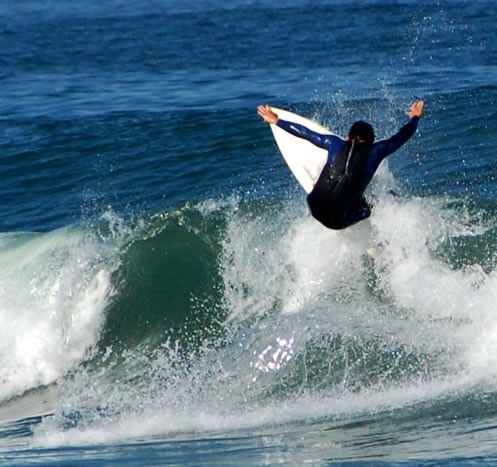For both those who have dreamed of hanging ten and those who would rather just be hanging out, say aloha to this week’s Grobby: surfing.
Before Boarding — The Need-to-Know
Some surf historians regard reed fishing boats called caballitos, or “little horses,” as the predecessor to the modern surfboard, dating all the way back to Peru in 3000 B.C.E. Others point to Polynesian settlers in the Pacific isles as the true creators of surfing, which as a children’s pastime is believed to have begun around 2000 B.C.E. Native Hawaiians broadened the sport around 1200 A.D., when priests called Kahunas would whip the water’s edge with vines to promote good waves for Hawaiian chiefs who used surfing as a way to stay in shape.
Now a sport for chiefs and commoners alike, surfing offers a high-intensity anaerobic workout (think all-out paddling into the waves) with lower-intensity aerobic work (think hanging ten)
Making Waves — Your Action Plan
Just starting out? Pick up a used board that’s a little thicker and wider for added stability. It will become clearer later whether to purchase a long board for easier paddling and wave-catching, or a short board for better maneuvering (depending on personal strengths and weaknesses).
And before hitting the waves, make sure to consult an experienced instructor who can teach the fundamentals and help navigate the dangers of the nearby surf. Check for obstacles both above and below the water (going to need a bigger board?) and take a look at the local weather forecast. It’s also worth considering a nose guard or rubber-coated fins for added board safety, as it takes time to learn how to fall off the board like a pro.
So next time a calm (and not too windy) day comes beckoning, hit the waves for a rocking good time. And remember, most won’t be able to hang like Johnny Tsunami— at least at first.
Beginners’ Tips
Some additional beginner’s tips from surf planner Michael Brooks and professional surfer Serena Brooke:
Michael Brooks:
- Warm up for 5-10 minutes with a short jog down the beach and some dynamic stretching for 5 minutes. Definitely get some deep squats in to warm up the knees— really move them through a full range of motion.
- Check out where the pack of surfers is. You don’t want to paddle out where a bunch of people are surfing— it’s bad etiquette and unsafe.
- Try to always know where your board is and come up slow— hands and arms always protecting the head.
- Talk to someone who knows about surfing and surfboards— don’t just try to go and buy whatever board the shop is trying to sell you.
- Be aware of your ability level and when you should and should not be paddling out.
- Surfing is really fun— just don’t take yourself too seriously in the beginning stages!

